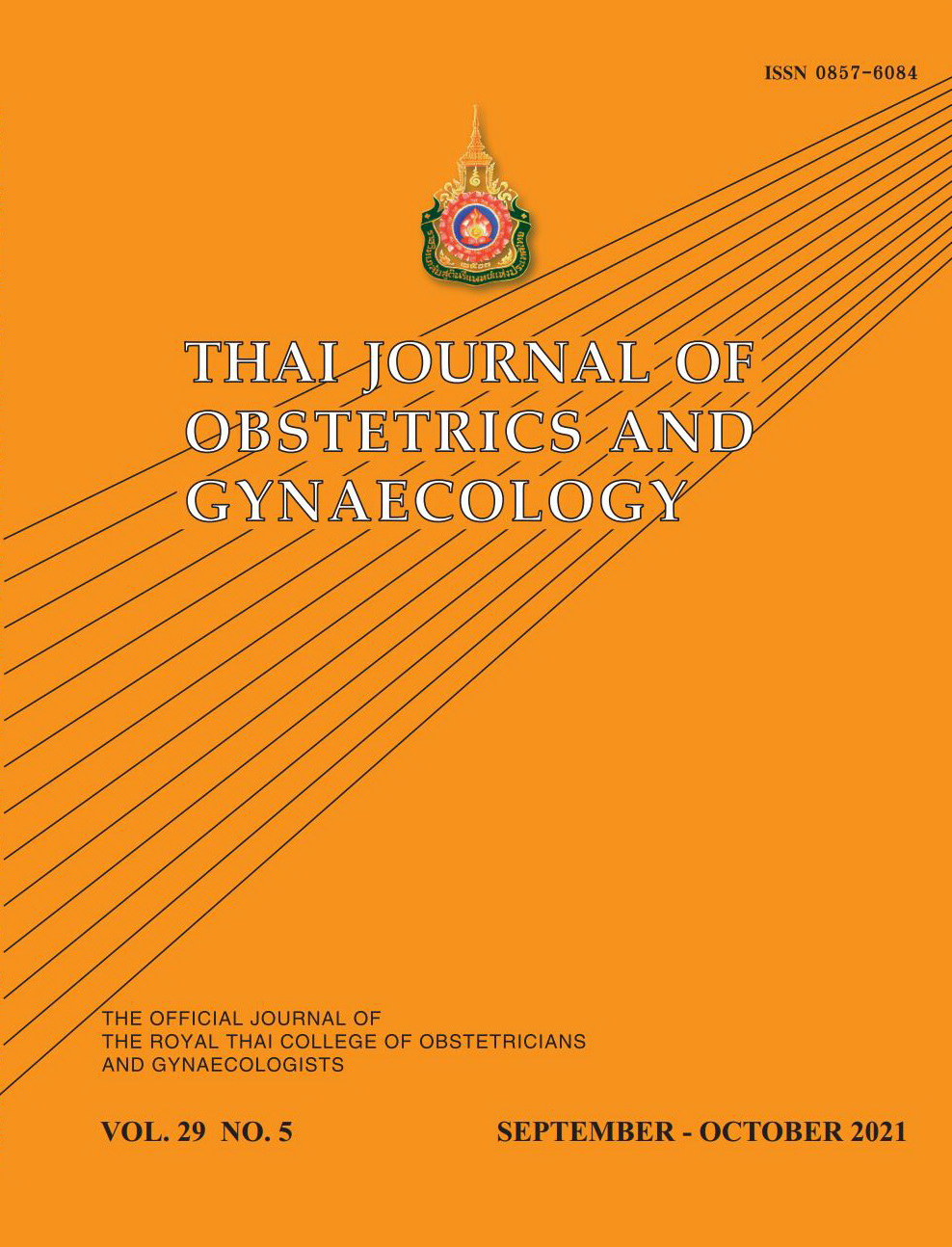Incidence and Risk Factors of Urinary Retention after Vaginal Hysterectomy for Pelvic Organ Prolapse
Main Article Content
Abstract
Objective: To determine the incidence and risk factors of urinary retention after vaginal hysterectomy for pelvic organ prolapse.
Materials and Methods: This is a retrospective review of 279 women who underwent vaginal hysterectomy for pelvic organ prolapse between 2005 and 2013 in Siriraj Hospital. Baseline characteristics, types and degrees of prolapse, concomitant surgical procedures, anesthetic method, operative time, intraoperative blood loss, and duration of postoperative indwelling catheter were recorded. Postoperative urinary retention was defined as a post-void residual urine 150 ml or more, measured by intermittent catheterization. The incidence and risk factors were identified.
Results: The incidence of postoperative urinary retention was 10.0%. Compared to those without urinary retention, patients with urinary retention were significantly more likely to have anterior colporrhaphy (78.6% vs 57.4%; OR 2.725; 95%CI, 1.022-8.473; p=0.03). Age, parity, BMI, type of prolapse, anesthetic method, operative time, intraoperative blood loss, and duration of postoperative indwelling catheter were comparable between the groups.
Conclusion: Incidence of urinary retention after vaginal hysterectomy was 10.0%. Anterior colporrhaphy was the only factor associated with postoperative urinary retention.
Article Details
References
Haylen BT, Maher CF, Barber MD, Camargo S, Dandolu V, Digesu A, et al. An International Urogynecological Association (IUGA) / International Continence Society (ICS) joint report on the terminology for female pelvic organ prolapse (POP). Neurourol Urodyn 2016; 35: 137-68.
Doshani A, Teo REC, Mayne CJ, Tincello DG. Uterine prolapse. BMJ 2007; 335: 819-23.
American College of Obstetricians and Gynecologists. Pelvic organ prolapse. Female Pelvic Med Reconstr Surg 2017; 23: 218-27.
Vijjeswarapu AP, Londhe V, Gowri M, Kekre A, Kekre N. Prevalence and clinical predictors for early post-operative urinary retention in patients undergoing pelvic reconstructive surgeries; a prospective cohort study. Int J Reprod Contracept Obstet Gynecol 2018; 7: 1452-7.
Hakvoort RA, Dijkgraaf MG, Burger MP, Emanuel MH, Roovers JP. Predicting short-term urinary retention after vaginal prolapse surgery. Neurourol Urodyn 2009; 28: 225-8.
Priyatini T, Sari JM. Incidence of postoperative urinary retention after pelvic organ prolapse surgery in Cipto Mangunkusumo National General Hospital. Med J Indones 2014; 23: 218-22.
Chong C, Kim HS, Suh DH, Jee BC. Risk factors for urinary retention after vaginal hysterectomy for pelvic organ prolapse. Obstet Gynecol Sci 2016; 59: 137-43.
Keita H, Diouf E, Tubach F, Brouwer T, Dahmani S, Mantz J, et al. Predictive factors of early postoperative urinary retention in the postanesthesia care unit. Anesth Analg 2005; 101: 592-6.
Geller EJ. Prevention and management of postoperative urinary retention after urogynecologic surgery. Int J Womens Health 2014; 6: 829-38.
Agrawal K, Majhi S, Garg R. Post-operative urinary retention: Review of literature. World J Anesthesiol 2019; 8: 1-12.


